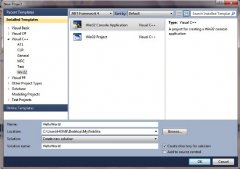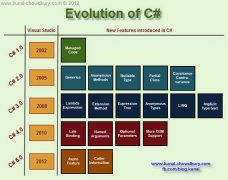Windows平台CUDA开发之前的准备工作
CUDA是NVIDIA的GPU开发工具,目前在大规模并行计算领域有着广泛应用。
windows平台上面的CUDA开发之前,最好去NVIDIA官网查看说明,然后下载相应的driver, ToolKits等等。如果你下载最新版本的CUDA7.0,里面其实已经包含了driver及Tool kits。
特别要注意:目标最高版本为CUDA7.0,仅支持64位系统(32位没法安装CUDA 7.0 Tool Kits),另外,,VS编译平台最低要求是VS2010。 So,那些依然用VC6或者VS2008的就别犹豫了,赶快换平台吧。
下面贴出NVIDIA官网的start guide:(坑爹的NVIDIA,在develop的地方以及下载tool kits的地方,都没有提到这个start guide,造成笔者反复安装配置了多次,奔溃。。。。)
CUDA? is a parallel computing platform and programming model invented by NVIDIA. It enables dramatic increases in computing performance by harnessing the power of the graphics processing unit (GPU).
CUDA was developed with several design goals in mind:
Provide a small set of extensions to standard programming languages, like C, that enable a straightforward implementation of parallel algorithms. With CUDA C/C++, programmers can focus on the task of parallelization of the algorithms rather than spending time on their implementation.
Support heterogeneous computation where applications use both the CPU and GPU. Serial portions of applications are run on the CPU, and parallel portions are offloaded to the GPU. As such, CUDA can be incrementally applied to existing applications. The CPU and GPU are treated as separate devices that have their own memory spaces. This configuration also allows simultaneous computation on the CPU and GPU without contention for memory resources.
CUDA-capable GPUs have hundreds of cores that can collectively run thousands of computing threads. These cores have shared resources including a register file and a shared memory. The on-chip shared memory allows parallel tasks running on these cores to share data without sending it over the system memory bus.This guide will show you how to install and check the correct operation of the CUDA development tools.
1.1. System Requirements
To use CUDA on your system, you will need the following installed:
The next two tables list the currently supported Windows operating systems and compilers.
Table 1. Windows Operating System Support in CUDA 7.0
Operating System
Native x86_64
Cross (x86_32 on x86_64)
Windows 8.1
YES
YES
Windows 7
YES
YES
Windows Server 2012 R2
YES
YES
Windows Server 2008 R2
YES
YES
Table 2. Windows Compiler Support in CUDA 7.0
Compiler
IDE
Native x86_64
Cross (x86_32 on x86_64)
Visual C++ 12.0
Visual Studio 2013
YES
YES
Visual Studio Community 2013
YES
NO
Visual C++ 11.0
Visual Studio 2012
YES
YES
Visual C++ 10.0
Visual Studio 2010
YES
YES
x86_32 support is limited. See the x86 32-bit Support section for details.
x86 32-bit Support
Native development using the CUDA Toolkit on x86_32 is unsupported. Deployment and execution of CUDA applications on x86_32 is still supported, but is limited to use with GeForce GPUs. To create 32-bit CUDA applications, use the cross-development capabilities of the CUDA Toolkit on x86_64.
Support for developing and running x86 32-bit applications on x86_64 Windows is limited to use with:
GeForce GPUs
CUDA Driver
CUDA Runtime (cudart)
CUDA Math Library (math.h)
CUDA C++ Compiler (nvcc)
CUDA Development Tools
1.2. About This Document
This document is intended for readers familiar with Microsoft Windows operating systems and the Microsoft Visual Studio environment. You do not need previous experience with CUDA or experience with parallel computation.
The setup of CUDA development tools on a system running the appropriate version of Windows consists of a few simple steps:
Verify the system has a CUDA-capable GPU.
Download the NVIDIA CUDA Toolkit.
Install the NVIDIA CUDA Toolkit.
Test that the installed software runs correctly and communicates with the hardware.
2.1. Verify You Have a CUDA-Capable GPU
温馨提示: 本文由Jm博客推荐,转载请保留链接: https://www.jmwww.net/file/71153.html




